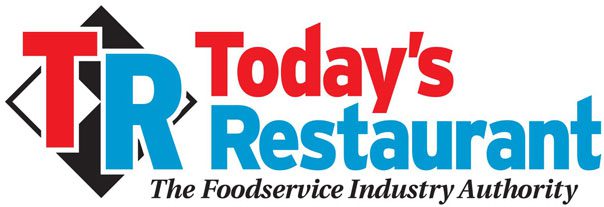
How to Turn Franchisee Closures into Systemwide Growth Opportunities
By: Paul Segretto
Franchise systems are built on the promise of consistency, brand strength, and mutual success. However, despite best efforts, not every franchisee thrives. Economic shifts, personal circumstances, poor site selection, or operational challenges can lead to underperformance and, ultimately, closure. For franchisors, managing these closures with empathy, strategy, and structure is critical—not only to protect the brand and maintain system integrity, but also to honor the investment and effort of the franchisee.
Rather than treating closures as isolated failures, franchisors can develop a comprehensive framework that addresses both the business and human aspects of these transitions. This framework should prioritize clear communication, proactive planning, operational continuity, and support for all parties involved.
Recognizing the Early Warning Signs
The process begins well before a franchisee announces they’re considering closing. Most closures are preceded by months of operational red flags—declining revenue, frequent compliance issues, lapses in reporting, or disengagement from system-wide initiatives. By implementing a robust franchisee performance monitoring system, franchisors can identify these indicators early. Regular field visits, financial benchmarking, and peer comparisons can help detect when intervention is necessary.
Franchise business consultants or field support representatives should be trained not just to report deficiencies but to coach struggling franchisees, helping them create realistic turnaround plans while also beginning contingency planning in the event recovery fails.
Open Communication and Realistic Evaluation
Once closure is on the table, franchisors should initiate a transparent and non-combative discussion. The goal at this stage is mutual understanding—assessing the root causes of failure and exploring all available options. Can the business be sold to another franchisee or back to the franchisor? Are there ways to cut costs, restructure, or relocate? If closure is inevitable, both sides must align on the least disruptive path forward.
Legal and operational teams should work closely to review the franchise agreement, assess termination rights and obligations, and map out the necessary steps. However, even in enforcing contractual terms, the tone should be solutions-driven, not punitive.
A Step-by-Step Closure Framework
A structured approach to closure minimizes disruption, preserves brand reputation, and allows the franchisee to exit with dignity. An effective framework includes:
- Official Notice & Documentation – Clearly document the reasons for closure, mutual consent (if applicable), and any required termination or release forms. Clarify timelines and expectations.
- Asset and Inventory Assessment – Determine what assets are transferable, liquidatable, or subject to franchisor purchase rights. In food service or retail, this includes equipment, signage, inventory, and proprietary systems.
- Brand De-Identification – Outline a process for removing brand elements—signage, menus, uniforms, marketing materials—within a defined window. This prevents consumer confusion and protects trademark integrity.
- Staff Transition Planning – Assist the franchisee in creating a transition plan for employees. This may include job placement assistance with other franchisees or severance coordination if feasible.
- Customer Communication Strategy – Provide a template or guidance on how the franchisee should notify customers about the closure, especially for service-based businesses where continuity is expected. The franchisor may also communicate directly to local customers to reinforce brand stability.
- Post-Closure Support – Offer limited post-closure counseling or advisory support. Franchisees exiting under difficult circumstances may benefit from business counseling, debt negotiation resources, or even a path to reenter franchising in a different capacity when ready.
Resale and Refranchising as Alternatives
Not every failing location has to close. Franchisors should have a streamlined resale and refranchising program in place. This can involve identifying high-potential buyers within the system, marketing the opportunity externally, and prequalifying prospects. In some cases, converting the location into a company-owned unit temporarily can bridge the gap between one franchisee’s exit and another’s entry, preserving market presence.
These transactions must move quickly and be well-managed. The smoother the handoff, the less risk of customer attrition or operational decline during the transition.
Maintaining System Integrity
When closures do happen, other franchisees are watching. How a franchisor handles the situation signals whether they lead with fairness and competence. A well-managed closure process builds credibility. It reinforces that the franchisor is committed to protecting the system—not just from brand damage, but from demoralizing inconsistency.
Equally important, closures can be data points for improvement. Analyze each one for trends—territories that underperform, marketing weaknesses, training gaps, or lapses in franchisee selection. Refining the recruitment, onboarding, and support process based on these learnings helps prevent future closures.
Franchisees Are Not Disposable
Above all, franchisees who are forced to close deserve respect. They invested their time, capital, and belief in the brand. Franchisors who treat these exits as an unfortunate yet human part of business life—not as a threat to be contained—will maintain stronger relationships across the system and be seen as true partners in business.
Final Thoughts
Managing franchisee closures effectively is not about damage control—it’s about stewardship. With a proactive and compassionate framework, franchisors can turn difficult exits into teachable moments, protect brand equity, and sustain long-term system health. Every closure, when managed well, opens the door to improvement, resilience, and renewed opportunity across the network.
Make today a great day. Make it happen. Make it count!
About the Author
Paul Segreto brings over four decades of hands-on experience in franchising, restaurants, and small business development. A passionate advocate for entrepreneurship, Paul has guided countless individuals on their journey to success, whether they are established entrepreneurs or just beginning to explore the path of business ownership.
Named one of the Top 100 Global Franchise and Small Business Influencers, Paul is also the voice behind the Acceler8Success Cafe, a daily content platform where thousands of entrepreneurs gain insight and motivation. A lifelong advocate for ethical growth and brand integrity, Paul continues to coach founders, franchise leaders, and entrepreneurial families, helping them find clarity in chaos and long-term success through intentional leadership.
Want to read more great articles you can use, visit www.trnusa.com or www.trnusa.com/blog




Recent Comments